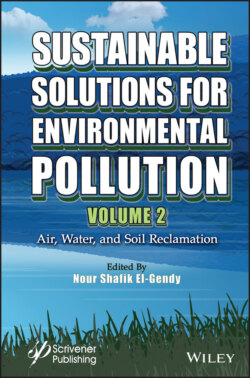Читать книгу Sustainable Solutions for Environmental Pollution, Volume 2 - Группа авторов - Страница 18
1.3 Aquatic Bioremediation Structures
ОглавлениеUntil the end of the 21st century, urban wastewater was extensively discharged into water bodies such as rivers and lakes, without any treatment: the self-purification taking place in these water bodies was supposed to be sufficient. However, microbiology was still in infancy at that time, and drinking water resources, such as surface waters, were often contaminated by waterborne disease agents, such as protozoa (Giardia intestinalis, first described by Antoni van Leeuwenhoek in 1681, Cryptosporidium) and bacteria (Shigella (discovered in 1897 by K. Shiga and causing dysentery), Salmonella enterica (causing typhoid), Vibrio cholerae (cholera agent discovered by Pacini in 1854 and rediscovered by Koch in 1885).
One of the first “treatments” of urban wastewater was indeed nature-based as it consists to spread wastewater in agricultural fields where it could act as a fertilizer. This practice has lasted for about 100 years in Paris and Reims (France). The contamination of soils by micropollutants (in particular metals such as lead) has led to the abandoning of vegetable crops for non-food crops.
Because of rapid urbanization, climate change, and extreme weather events induced, water-related issues, such as flooding, groundwater over-exploitation, water shortages, and wastage, and water pollution, are becoming a global concern (Simperler et al., 2020). The development of the concept of sponge cities (Sun et al., 2020) aiming at improving the response of cities to rainfall should take into account the risks of dissemination of micro-pollutants. Constructed Wetlands (CWs) are essential NBS infrastructures in urban water management in the sponge city concept, in order to control the growing menace of urban flooding. With green spaces, rooftop gardens and permeable streets, CWs both “buffer” water flows and reduce flood during storms and purify the pollution carried by rainwater. In fact, they act like a sponge to absorb and treat water before a flood occurs and limit urban heat islands in city (Nguyen et al., 2019b).
Storm water retention systems in urban areas are mostly dedicated to the capture of particulate pollution and to infiltration. Many micro-pollutants are fixed on particles and therefore retained. It is the case of alkylphenols and bisphenol A, as shown by Wiest et al. (2018) in a storm water detention basin of an industrial area or polycyclic aromatic hydrocarbons (PAHs) and metals (such as Zn or Cu) in a urban case (Walaszek et al., 2018). The contamination of the sediments implies their careful management. Dissolved micropollutants can, however, be transferred to groundwater and surface water. During winter, deicing salts, containing sodium and chloride, are of concern in regions where they are spread on roads. Deicing salt leads to a degradation of the quality of runoff water. Some NBS filtering structures, such as swales or ditches, significantly reduce the runoff of deicing salt to surface water, by retention and infiltration. However, while filter structures can buffer the salt content of surface water, they are also a means of loading salt into groundwater (Burgis et al., 2020; Lam et al., 2020).
Nowadays, eco-engineering practices attempting to improve bioremediation in rivers receiving untreated or treated municipal and industrial wastewater as well as agricultural or urban runoff focus on physical actions through hydro-geomorphological modifications as constructed swales or riffles across urban creeks (Kasahara et al., 2006; Mendoza-Lera and Datry, 2017). Hydrogeomorphic manipulation of riverbed aims to increase pollution interception and bioprocessing inside the bed and to restore and enhance the river self-purification capacity.
In running waters, redox processes are not so gradually structured according to depth as described in lake sediments (Bertrand et al., 2011) where a stratified redox gradient, from oxic condition in surface, to suboxic and anoxic conditions is formed (Figure 1.1). Preliminary results show a high sediment functioning heterogeneity according to water flow, geomorphology, hyporheic, and nutrient fluxes due to hydraulic conductivity and hydraulic gradient (Namour et al., 2015). The redox cycling of organic C and N not only drives the micro- and macro-biological communities, but also has implications for global nutrient balances and climate change.
Structures harboring purifying capacities must selectively trap dissolved pollutants in order to concentrate them and make them available to biomass. Therefore, the zones with the highest assimilation and purification capacities are the zones where the immobilization of pollutants is the highest; this pollutant trapping is a prerequisite at any biodegradation and assimilation. Inside these filtering structures where a large heterotrophic biomass will develop and will be the most active self-purification zones, Sensu lato, we can define four main types of filtering structures:
1 Mechanical filters, where steric obstruction retains particulates and associated pollutants;
2 Physical filters which retain dissolved chemical compounds by adsorption;
3 Physical-chemical filters, in which changes in pH or rH, or even UV irradiation or presence of redox compounds induce a chemical modification of pollutant;
4 Biochemical filters, where aquatic flora and microflora degrade and metabolize the pollutant.
In the natural environment, these four types of filters act together and their interactions are very strong. Thus, the precipitated pollutant (physical-chemical filter) is stopped in the interstices of the sediment (mechanical filter) where microbial biomass degrades it (biochemical filter). Mechanical and physical-chemical filters are not, strictly speaking, structures for the biodegradation of pollutants, but through their retention capacity, they participate by storing and concentrating the OM and the associated pollutants, thus allowing the development of microbial activities and pollutant biodegradation and leading to a real self-purification (Namour, 1999). The formation of physical-chemical gradients in sediments is the result of the balance between hydraulic conductivity pattern and retention, due to the mechanical filtering effect of pore size (Naganna et al., 2017). Retention allows the transient storage of pollutants and their biochemical transformations by the microbial flora, which depends on the physical-chemical conditions of the environment (Brunke and Gonser, 1997). Bioremediation setups based on NBSs should mimic, as much as possible, these natural filters in the construction of self-purifying nature-based systems.
